Psychogeography
Imagine Berlin. Imagine a city of fragments and ghosts. Imagine a metropolis which inspired countless artists and witnessed uncountable murders. Imagine a laboratory of ideas, the fount of both the brightest and darkest designs of history’s most bloody century. Imagine the most arrogant capital of Europe devastated by Allied bombs then divided. Imagine it reunited and reborn as one of the creative centres of the world. (Rory Maclean "Berlin: Imagine a City")
I live in Berlin for almost two decades now. It's the place I call home - my freely chosen Zuhause, not the Heimat where I was born. Besides enjoying the obvious perks of living in a European capital city, Berlin has always felt to me like I belong here. It has given me subtle weird and at the same time beautiful tingles from the first day of my arrival: uncanny feelings of nostalgia I only know from some of my dreams and a permanent sense of out-of-time-and-place-ness that I very much resonate with.
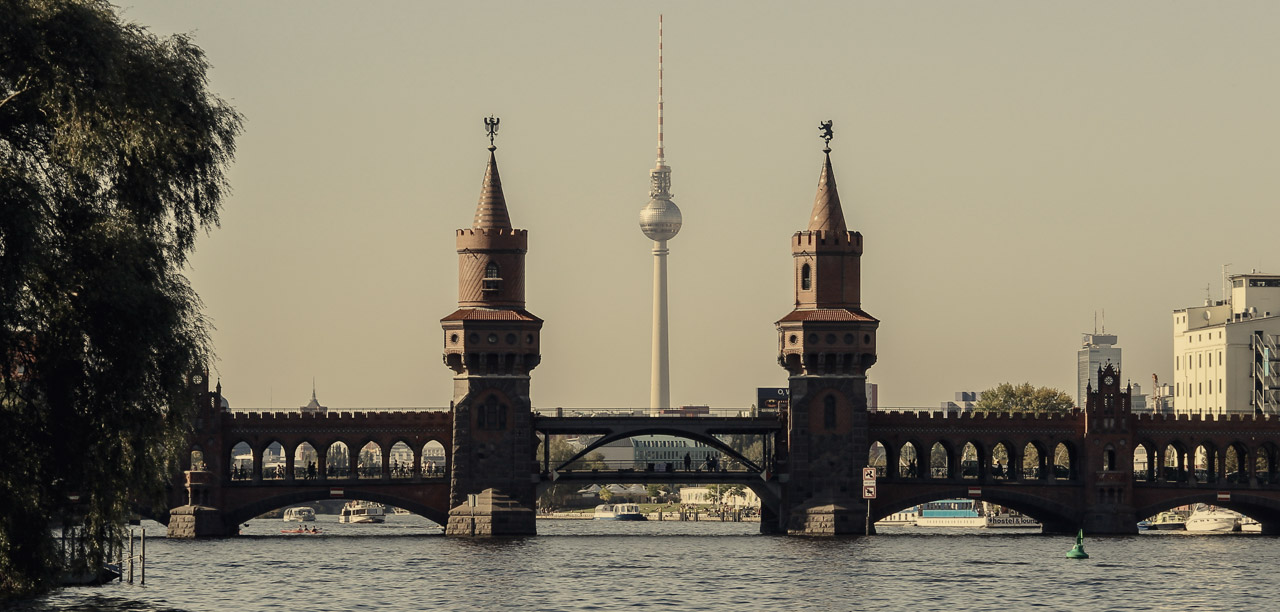
I live in Berlin. [...] it is different from anywhere else. But I cannot quite express that difference, that otherness, in words yet. (Nooteboom "Roads to Berlin")
In the past I have always explained away the strangeness with the unique historical impacts of two World Wars and a Cold War that one encounters almost on every street corner, but since I started travelling my path of enchantment, I've wanted to dig deeper into the metaphysical heart of this city - to find the Spiritus Loci.
Berlin is the city of the negative space, the space where something is not, the bombed-out-of-existence, the closed-off, the mysteriously forbidden. The symbol of this is the bullet holes that you can see so often, small indentations, places where stone or brick should be, but where they are conspicuous by their absence, just as people are absent from closed metro stations. (Nooteboom "Roads to Berlin")
The twentieth century has had such a harsh impact on Berlin that it becomes difficult - almost impossible - to look beyond the trauma, to get a larger historical perspective, to try to grasp a more macroscopic image of Berlin's soul from the times before the death and destruction.
He did not have the same feeling in France, in Italy, or in his own country. Those places had enough past, but somehow it had transformed more or less organically into a present. Here, the transition was not complete. The past had become stuck, bogged down, coagulated, curdled, been torn away. But it was still there. Perhaps it was just waiting. (Nooteboom "Roads to Berlin")
Obviously Berlin is haunted with ghosts - eerily silent ghosts. I didn't want to look for those, they are everywhere anyway. I wanted to find the spirit of the city itself.
In his books, Gordon White writes about the importance of a city's river spirit:
[T]he story is always the same because river spirits are always the same: How long have we been here? Who came before? Where did they go? Who or what answered their night prayers, and at what cost? Civilisation is the tobacco of river spirits. They seem to crave it, to will it into being up and down their banks, even though the relationship appears damaging over the long term. (Gordon White "Star.Ships: A Prehistory of the Spirits")
In our local monthly meetup of Berlin based witches & wizards we've also discussed this topic and it inspired me to look for folklore and myths about Berlin's Spree river to find clues about the nature of it's inhabiting spirit. I started digging into German online sources, looking as far back as the very beginnings of the history of Berlin:
Prehistory
In pre-christian times the area of Berlin had been visited by Germanic as well as Slavic tribes. Although the Germans had been here first, almost all of their tribes had settled here just temporarily on their way further South during the great migration periods in the 5th until the 7th century. The Wends, a Slavic people coming from the East, settled in the area but mostly in the South of Brandenburg along the Spree. They had established and defended themselves against German re-conquest until the end of the first millennium. A second and larger germanisation attempt in the 13th century was successful, the Slavic rulers were defeated and their people were slowly assimilated. Of course history was way more complicated than that, but this is the very short summary. Their legacy are names of places (like Berlin), the Sorbic language spoken by a minority in the East of Germany, and lots of interesting folklore.
All through the timeline I could not find any relevant myths and legends regarding the Spree river from the close proximity area of Berlin, I guess because Berlin had no real significance until the beginning of the era of long distance trade with ships during the Middle Ages when it became a real city.
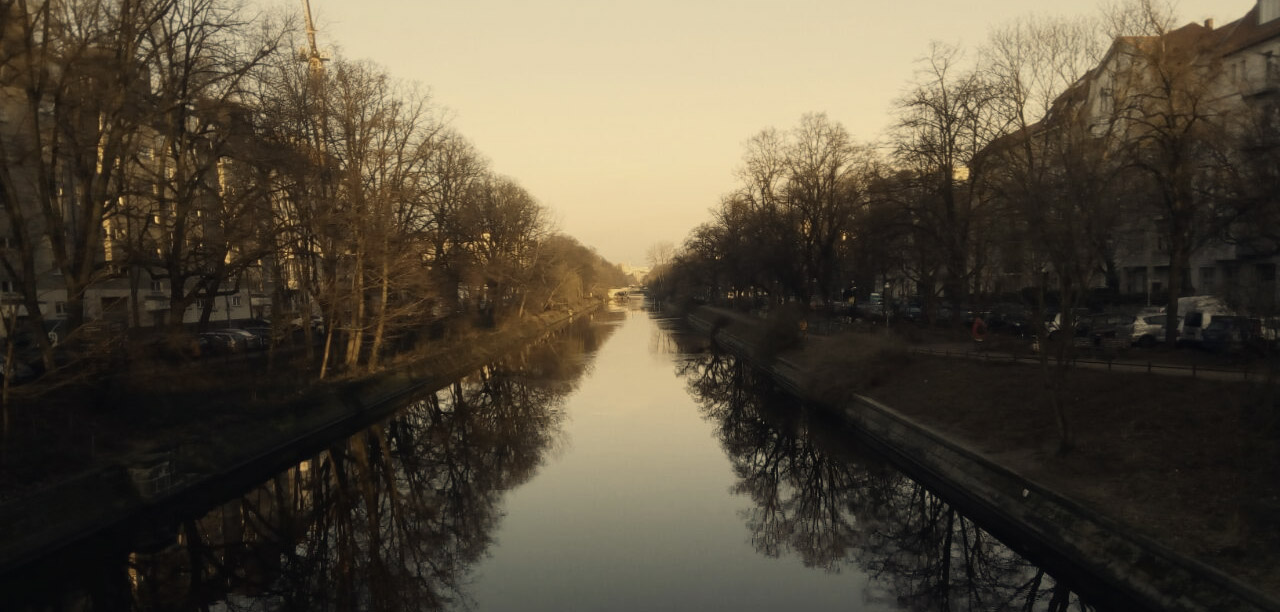
The Nix of the Spree
So I followed the Spree upriver looking for hints and I found a whole treasure of legends from the Spreewald area, where the river splits into numerous creeks and canals surrounding marshes and swamps. The other place that offers legends surrounding the river is from Lausitz (Lusatia) further upriver towards the Czech border.
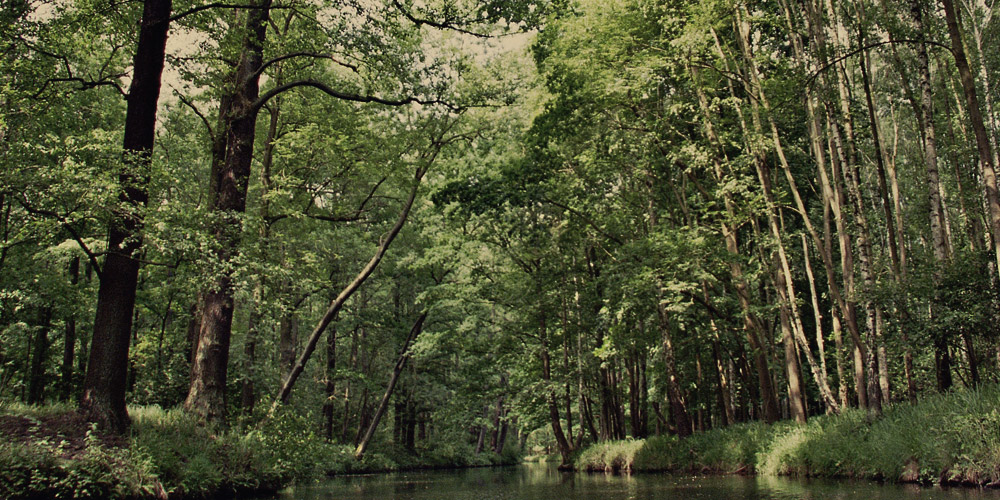
Besides very interesting local legends about the Serpent King, the little dragon Plon, the funny Lutki gnomes and the midday woman, who likes to kill everyone who works at noon instead of taking a break, I found tales of the spirit of the river in the form of the Nyks!
The Nix or Nyks, also called Wodny Muž or Vodnik is a quite moody merman shaped trickster daimon. There are many legends of mermen and mermaids across Celtic, German and Slavic lore, also very often called Nix or Nök but the Spreewald one seems to be especially peculiar.
In his evil or grumpy version he is depicted as having a fish or toad like appearance or of a water corpse. He likes to sit on the banks of the river and scare or even kill children with a club or pull people into the water who are not paying attention or who are mindlessly picking water lilies. He is responsible and feared for causing floods, especially during spring time. The Nyks is said to have beautiful daughters (Nixen) that lure young men into the waters.
When he is in a good mood he appears as a rich farmer, fisherman or a well dressed groom (of "Mother Spree"). He likes to dress in red or wear a green jacket and he is known to help poor fishermen. The Nyks has quite mercurial features as he likes to trade on the market square and play cards and drink in taverns. He can be recognized by his coat having a wet seam and because he never touches cards with a cross (clubs). He likes to loiter around the riverbanks smoking his pipe. Fishermen ask him for help by placing a pinch of tobacco in the water and saying, "Here's your tobacco, Lord Vodník, now give me a fish."
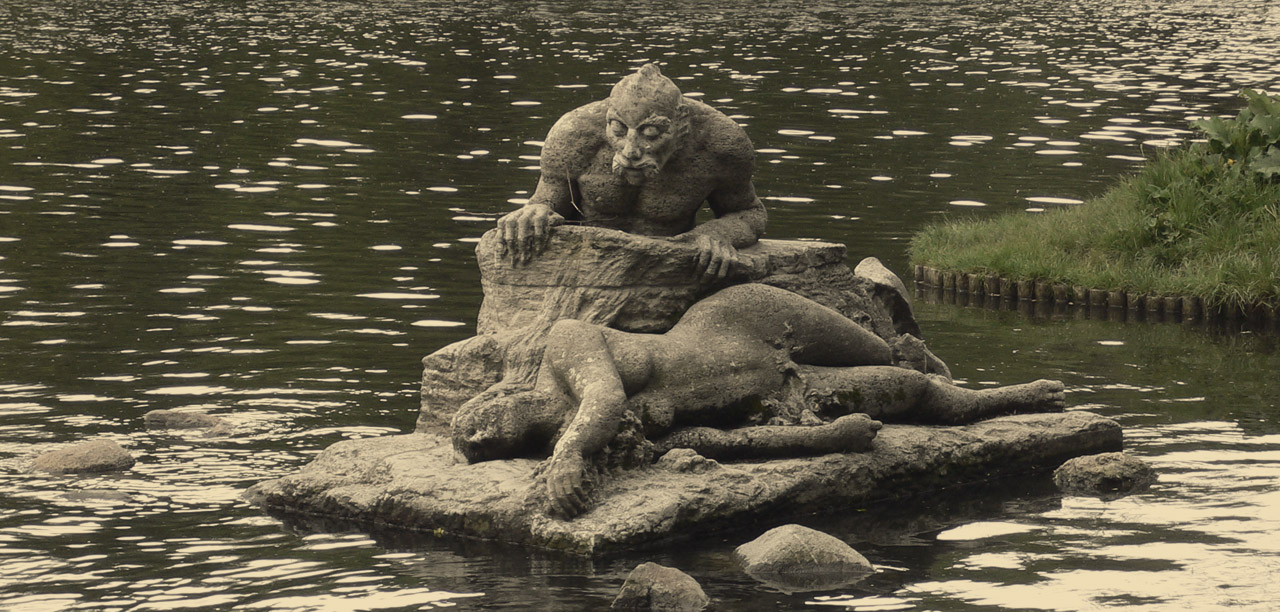 (The Nök, a similar spirit of the Karpfenteich pond in Berlin Treptow)
(The Nök, a similar spirit of the Karpfenteich pond in Berlin Treptow)
Being a mercurial trickster it becomes clear why he likes the presence of creatives and entrepreneurs, artisans and merchants. The city is crowded with mercurial people and is a hub of globetrotters and travellers. The creative scene and nightlife are well known around the globe. The open-mindedness is nothing new: it probably peaked in the roaring 1920s and was already present in different ways even before that under Frederick the Great and Frederick William despite their military fetish.
The Black God
It made me wonder about the dark and malefic aspects Berlin certainly has. The constant re-occurring Martian obsession with order, control and militarism, fascism, xenophobia, the omnipresent scars and absences, the borderlines, the dragging stubbornness.
I stumbled upon several references to another myth surrounding the Spree - also further South near today's Bautzen: When the Wends ruled the region, apparently there had been a cult-statue of a god called Flins, Flynz or Flinc who loomed over a steep gorge of the Spree that flows like a wild river until this spot, after which it becomes silent, deep and slow. The icon is described as a bearded skeleton-like figure wearing a long coat, holding a burning bowl in his right hand and having a lion on his left shoulder - other sources describe him as standing next to a lion, being made from gold, holding a spear in one hand and holding up a cauldron over his other shoulder that started steaming when this war-god called his people to battle.
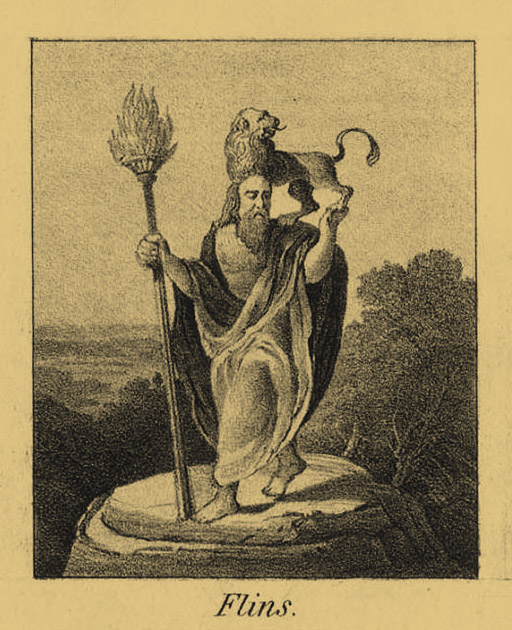
Sounds very Saturnian to me!
There are legends of caves around the gorge where his priests dwelled and about human sacrifices to him. When the Germans conquered and christianised the area, the icon was pushed down the cliff into the roaring Spree. People have tried to dive for it and there seem to be legends about underwater gold treasures and the Flins seems to demand more and more human sacrifices as people disappeared in the waters of the Spree.
It has been speculated that the Flins is no other than the notorious West Slavic black god called Chernobog or Diabol about whom much has been speculated but little can be said definitively.
So assuming the Flins was an animate icon of the West Slavic black god whose veneration for appeasement had suddenly ceased after christian conquest and he was forced into the Spree, it seems obvious that he haunts the river ever since and emanates his Saturnine influences into it. Combine that with the darker aspects of a mercurial spirit Nix and it becomes uncanny that the people in the largest city on the river's banks became obsessed with war and death, and had the world's most famous border-wall cutting right through the heart of the city - a border between people, countries, ideologies, worldviews. And before all that happened, the city was even the home of an occult Saturnian brotherhood.
Not that I want to blame all evil on the river, but he might certainly have had some influence.
Spirits of Berlin
Although the Nix seems at a first glance to not be specifically Berlin related, he is the spirit of the Spree that flows through Berlin. On top of that he seems to also be possessed by a restless black god who occasionally demands sacrifices. It's about time the Nix and the Flins get the recognition they deserve as spirits of place with influence on this city and time for us to try to connect with them.
How does a fish see the river it is swimming in? It cannot leave the water to gain distance or perspective. Something like that is happening in Berlin. Everything is flowing. (Nooteboom "Roads to Berlin")
I live in the area of Kreuzberg, near the Landwehrkanal, a canal connected to the Spree through a series of locks. The banks of the canal host farmers markets twice a week and occasionally flea-markets. The area is also popular for its abundance of bars and clubs - all places I can imagine the Nyks haunting regularly.
I walk along the canal every morning during my strolls with my daughter and I cross its bridges several times a day running chores, so I decided to start trying to hook up with grumpy old Nyx through offerings.
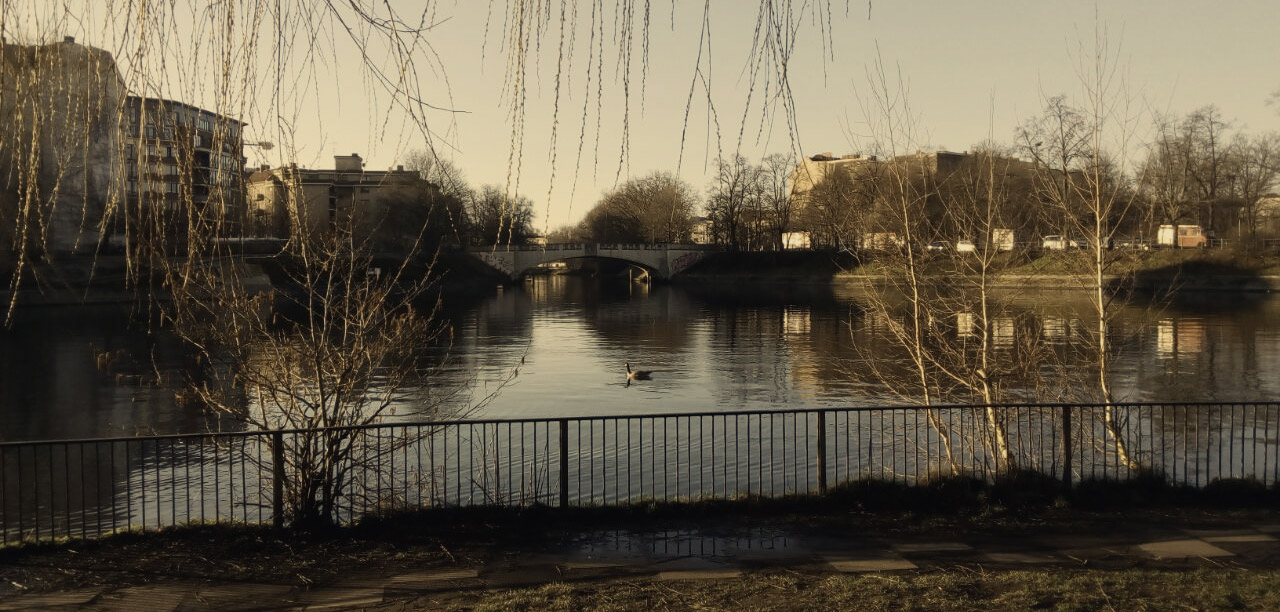
Judging from the folklore, appropriate offerings to him seem to be tobacco or a handful of earth or toasted bread. I assume he would also not deny strong alcohol. Protection from him can be achieved by wearing a cross.
Now I always try to bring some tobacco or bread along with me when I know that I'll be crossing or walking along the canal to offer it to the Spree spirit. I have asked for a few little general favors, like to bring luck. I have not had clear and obvious communication with him, but I hope that will be established soon. He is known to be stubborn, but so am I.
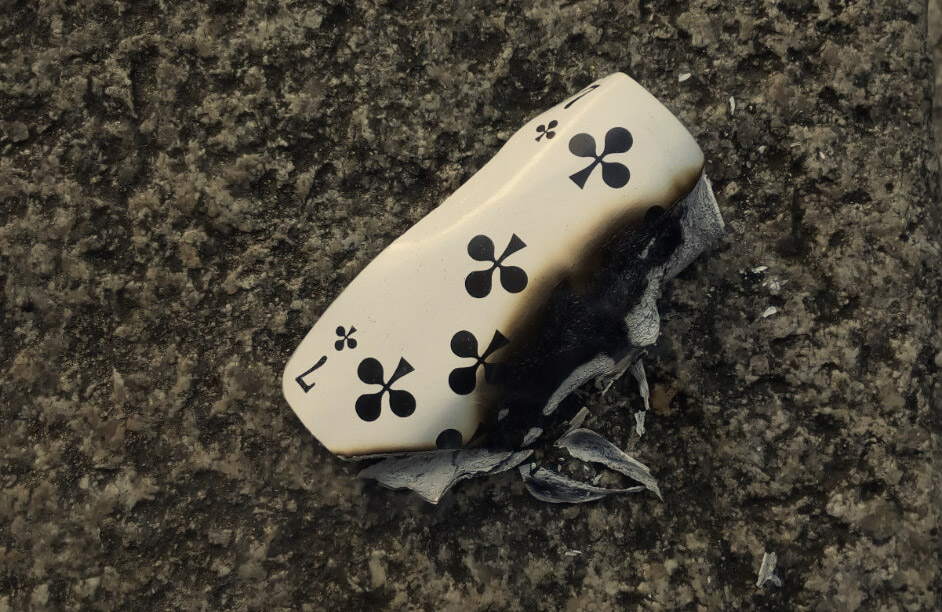 (I found a "7 of Clubs" card and burned it as an offering to the Nix)
(I found a "7 of Clubs" card and burned it as an offering to the Nix)
I also started including the Flins into my Saturday routine of praying to Kronos and perhaps start thinking about offerings to him too - although plenty of forces from Berlin seem to have provided more than enough human sacrifices during the 20th century to keep him pleased for a while, right? Let's hope so...
Quotes taken from:
Nooteboom, Cees (2013 [2009]), Roads to Berlin: Detours and Riddles in the Lands and History of Germany. Trans. Laura Watkinson. London: MacLehose Press.
found mainly in:
